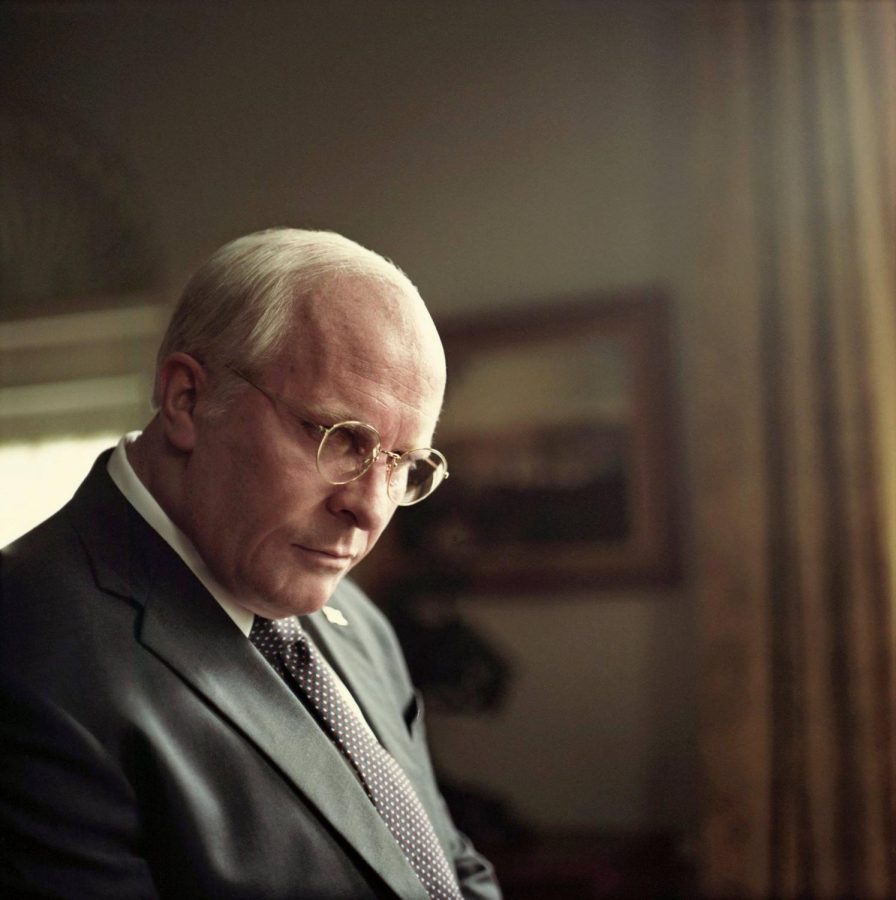The motion picture “Vice” puts the controversial and influential career of former Vice President Dick Cheney into context. Outstanding performances by Christian Bale, Amy Adams and Steve Carell combine with the eccentric yet endearing artistic direction of writer and director Adam McKay to create a lively and intense retelling of the story of one of America’s most influential politicians.
Cheney is a divisive and notoriously secretive figure; it is impossible not to have strong feelings about him. The film makes its bias clear early and often, painting Cheney in such a negative light that at certain points it almost feels like a political slander advertisement. However, regardless of your political leanings, “Vice” is well-written, well-acted and ultimately an enjoyable and intriguing movie, not to mention its Oscar-winning makeup team who managed to age Christian Bale nearly 50 years over the course of the movie nearly perfectly – an ambitious artistic undertaking. The story is told through Cheney’s perspective from his younger days as a power line worker up until his heart transplant in 2012, and covers practically every consequential event in his political career.
McKay’s unique style of direction captivates through even the somewhat dry explanations of policy and law required for a political piece in the nature of “Vice.” Quick, dramatic changes in writing style and constant manipulation of time keep the audience on the balls of their feet.
The writing, witty and realistic, can change in an instant to highlight important lines or themes. In one scene, Cheney, portrayed by Bale, and his wife Lynne, portrayed by Adams, discuss their path to political power and share a moment of mutual ambition. This conversation is not out of the ordinary in “Vice,” except for the fact that it is entirely in Shakespearean language, complete with iambic pentameter and melodramatic delivery.
In another scene, Cheney enjoys a meal with his advisors, including Donald Rumsfeld in a charmingly sleazy portray by Carrell, at a classy restaurant. However, the meal being offered by the waiter isn’t food; instead it is a menu of legal justifications for torture, which Cheney and his cronies are so delighted by that they order them all. In both scenes, the particular shift emphasizes a theme, whether it be a dramatic Shakespearean conversation about power or a light hearted, laughter-filled scene that highlights the casual nature of the decisions that negatively affected so many people.
Along with the dynamic writing style, the manipulation of time is key in the structure of the film. Showing different versions of Cheney at different times in his life contextualizes his decisions and actions as vice president. Witnessing the events that molded a young Cheney makes his actions as VP more understandable and relatable. The fluid writing style and movement back and forth in the chronology are necessary for the impact of the film, but can also bog it down and make it difficult to follow. To aid with this, the story is narrated by a peripheral character whose true identity is not revealed until the final few minutes of the movie. While these narrative sections are helpful in digesting the dense content of the movie, they are also tainted by a healthy dose of bias, an issue that plagues the film.
This heavy-handed spin against Cheney is one of the few detractors from an otherwise solid movie. The narration is almost always analysis of the events that just unfolded or are about to unfold on screen and almost always contain a hefty amount of opinion and judgement. Due to his secrecy and the secrecy of the federal government, it is impossible to know what really happened behind certain closed doors, but that doesn’t stop “Vice” from guessing and filling in the blanks.
While the movie is well-researched and relies mainly on factual occurrences to build its narrative, there are many plotlines of questionable veracity. The film avoids inventing anything that is clearly false, but there are many points where an event that may have never happened but is still plausible is fabricated. One example is when, in the movie, Cheney, without presidential authority, gives the order to “shoot down any aircraft deemed a threat” on 9/11. According to the 9/11 Commission Report, the president was aware of and authorized the shoot-down order. However, the order was given by Cheney at 10:15 a.m., and Cheney did not speak with the president on the phone until 10:18 a.m. The president is not confirmed to have authorized the order until 10:20 a.m.
Did the president and vice president decide on this matter unofficially prior to that call? Possibly. Did Cheney give the order first and ask for authorization later? Possibly. Did “Vice” choose the option that made Cheney look most like an authoritarian puppet master with no regard for the authority of the president? Definitely.
The movie is riddled with small examples like these that, combined with the facts, push the image of Cheney closer and closer to that of an authoritarian dictator. However, if you approach the movie as an artistically-minded interpretation of events as opposed to an informative bio pic, then it is a quirky and entertaining two hours well worth the price of admission.
Owen Bailey is a Collegian correspondent and can be reached at [email protected].



















